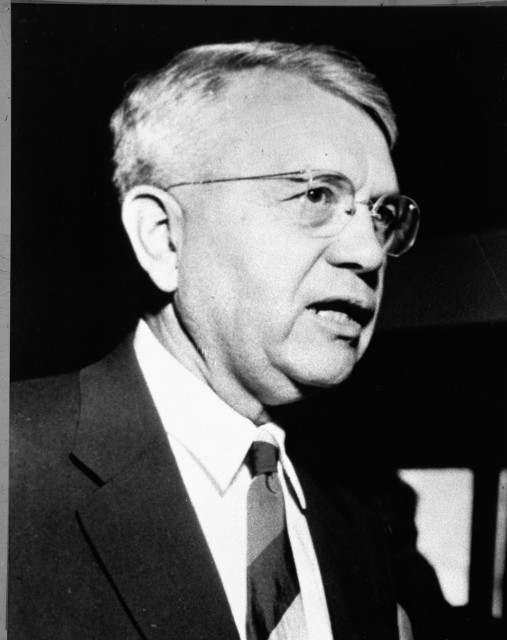Harold Clayton Urey
1893-1981

Urey was the discoverer of deuterium, the heavy non-radioactive isotope of hydrogen, and for this work he was awarded the 1934 Nobel Prize in Chemistry. By distilling a sample of liquid hydrogen, the deuterium was concentrated and its presence demonstrated spectroscopically (1931). The following year he showed that heavy water (D2O) could be concentrated by electrolysis. Deuterium became an invaluable tool for studying reaction mechanisms and biochemical processes.
Urey's research interests were eclectic. During WWII he directed work on isotope separation, including the fissionable 235U from the more abundant 238U isotope. Later, work with 18O led to a method for determining ancient ocean temperatures (up to 180 million years ago). This led him to study the relative abundances of the elements on earth, and to propose a theory of their origin and abundances in the sun and stars, and eventually to a theory of how the planets formed. His book "The Planets: Their Origin and Development" (1952) summarizes these ideas. Urey also worked on the origin of life, a theory of meteorite formation, and a study of the lunar surface.
Born in Walkerton, Indiana, Urey taught in country schools in Indiana and Montana until, at age 21, he entered the University of Montana. He obtained the Ph.D. at UC, Berkeley, spent a year with Niels Bohr and was on the Columbia University faculty when he discovered deuterium. Later he moved to the University of Chicago and finally the University of California-San Diego. Other honors besides the Nobel included the ACS 1934 Willard Gibbs and 1973 Priestley medals.
Sponsor: Laura Gieske Evans and Thomas A. Evans
Location in chemistry building: First Floor; West Wing North Wall; Sequence 5
Source: Edgar Fahs Smith Collection